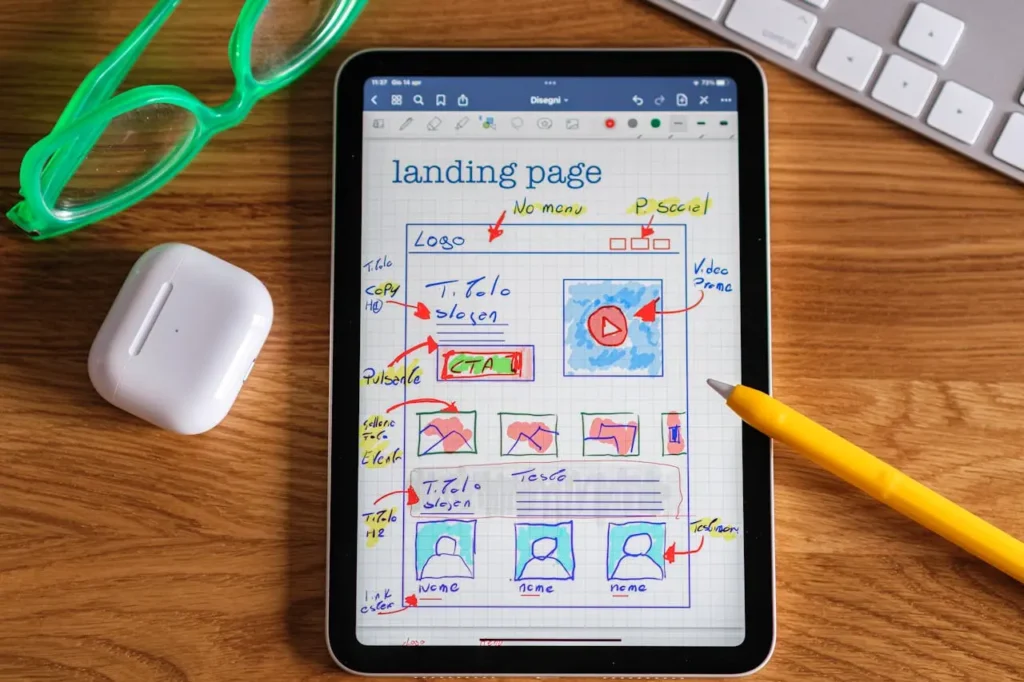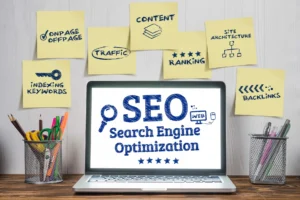
Mobile traffic has overtaken desktop across almost every industry. In fact, more than 83% of visits to landing pages now come from mobile devices.
Yet, here’s the surprising part: desktop landing pages still convert 8% better than mobile.
This “conversion gap” revealed in Unbounce’s 2025 Conversion Benchmark Report is costing businesses millions in missed opportunities. Imagine — if every industry optimized mobile experiences properly, there could be over 1.3 million additional conversions.
So, what’s really going wrong with mobile landing page conversion? Why are mobile users dropping off even though they dominate web traffic? And more importantly — what can marketers, business owners, and growth teams do about it?
This deep-dive article breaks down the latest findings, explains why mobile landing pages underperform, and shares actionable strategies to close the gap in 2025.
Table of Contents
Understanding the Mobile Landing Page Conversion Gap
At its core, the mobile landing page conversion gap refers to the difference in conversion rates between mobile and desktop devices.
- Mobile traffic share: 83%
- Desktop traffic share: 17%
- Conversion difference: Desktop converts 8% better
This means that even though the majority of people are visiting your site from mobile, they’re less likely to take action — whether that’s signing up, buying, or downloading.
In other words: traffic ≠ conversions.
Why Mobile Landing Pages Convert Worse Than Desktop
Let’s dig into the reasons behind this 8% conversion gap.
1. Design & UX Challenges
Most websites are still designed with a desktop-first mindset. Mobile versions often end up as “scaled-down” adaptations instead of being crafted for the mobile experience.
- Buttons too small to tap
- Long forms that feel painful on small screens
- Pop-ups that block content
These small design issues add up to lost conversions.
2. Slow Loading Speeds
Mobile users expect speed. If your page takes longer than 3 seconds to load, over 53% of users will bounce, according to Google.
Desktop internet connections are often faster and more stable, which explains part of the performance difference.
3. Copy Complexity
Unbounce’s study reveals that simpler landing page copy converts up to 56% better than complex writing. Yet, many marketers still overstuff mobile pages with jargon, long sentences, or unnecessary details.
On mobile, where screen space is limited and attention spans are shorter, clarity always wins.
4. Distracted User Behavior
Unlike desktop, where users are often focused, mobile browsing happens on the go — while commuting, multitasking, or casually scrolling.
This means mobile landing pages have to work harder and faster to capture attention and guide users to convert.
Key Findings From the Unbounce Conversion Benchmark Report

The 2025 Conversion Benchmark Report analyzed 57 million conversions across 41,000 landing pages.
Top findings:
- Mobile traffic dominates (83%) but underperforms.
- Desktop landing pages convert 8% better.
- If optimized, industries could gain 1.3 million more conversions.
- Simple copywriting directly improves conversions.
- Email marketing still drives the highest conversion rates.
This highlights a massive opportunity for marketers who take mobile optimization seriously.
Industry Benchmarks for Landing Page Conversion Rates
According to the report:
- Median conversion rate across industries: 6.6%
- Low-performing verticals: ~3.8%
- High-performing verticals: up to 12.3%
👉 If your landing page converts above the median, you’re doing better than most competitors. If not, it’s a clear signal to audit and optimize.
But remember: benchmarks measure conversion frequency, not conversion value. For high-ticket sales, even a lower conversion rate could mean more revenue than a free sign-up page.
The Power of Simplicity: Why Simple Copy Converts Better
Unbounce’s data is clear:
- Landing pages written at a 5th–7th grade reading level convert 56% better than those written at higher levels.
- Pages with complex words (3+ syllables) see a 24.3% drop in conversions.
Why? Because:
- Users scan instead of reading word by word.
- Simple words make it easier to take action.
- Complicated language creates friction and confusion.
As Unbounce puts it: “Simple copy converts.”
💡 Tip for marketers: Use tools like Hemingway App or Grammarly to simplify copy and test different versions through A/B testing.
Channel-Wise Conversion Insights: Email, Social, and Paid Search
The report also compared conversion rates across channels.
- Email marketing: 19.3% (highest performer)
- Paid social: Instagram (17.9%), Facebook (13%)
- Paid search: Lower than social (Google Ads underperforms compared to social)
This shows that:
- Email remains king for driving conversions.
- Paid social channels are stronger for quick actions and impulse conversions.
- Paid search is still important but needs strong landing page alignment.
Best Practices for Mobile Landing Page Optimization

Here’s how to close the mobile conversion gap.
1. Improve Speed & Performance
- Compress images with WebP format
- Use a content delivery network (CDN)
- Enable lazy loading for below-the-fold elements
- Minimize JavaScript and third-party scripts
2. Design for Small Screens
- Keep forms short (ask only essential info)
- Use large, tappable CTAs
- Remove intrusive pop-ups
- Ensure text is readable without zooming
3. Write Copy That Converts
- Aim for a 5th–7th grade reading level
- Use short paragraphs and bullet points
- Highlight benefits first, not just features
- Place the most important message above the fold
4. A/B Test Everything
- Test different CTA button colors, positions, and wording
- Experiment with short vs. long copy
- Compare one-step vs. multi-step forms
💡 Pro tip: Always run A/B tests separately for desktop and mobile. What works on desktop may fail on mobile.
Read Also This- How to Use Google Small Business Tools for Setup, Ads, and Analytics
Case Studies: Brands Closing the Mobile Conversion Gap
Case Study 1: E-commerce Brand
A fashion retailer optimized its checkout flow for mobile by:
- Reducing form fields from 6 to 3
- Adding a “Buy with PayPal/Apple Pay” one-tap option
Result: 17% increase in mobile conversions in 3 months.
Case Study 2: SaaS Startup
A SaaS brand simplified their landing page copy to a grade 6 reading level. They also replaced jargon-heavy phrases with simple benefits.
Result: 43% lift in free trial sign-ups from mobile.
Case Study 3: Fitness App
A fitness app ran A/B tests on CTA placement. Moving the download button above the fold increased mobile installs by 21%.
Looking Ahead: The Future of Mobile Landing Page Conversion in 2025 & Beyond

With mobile-first indexing, AI personalization, and shorter attention spans, the importance of mobile landing page optimization will only grow.
Future trends to watch:
- AI-powered landing page personalization
- Voice search integration on mobile pages
- Smarter micro-interactions (like click-to-call, instant chatbots)
- 5G speed advantage reducing load-time issues
Businesses that embrace these shifts will close the conversion gap faster than competitors.
Final Thoughts: Action Steps for Marketers
The 8% mobile landing page conversion gap is both a challenge and an opportunity.
Here’s your quick action plan:
- Audit mobile vs desktop performance separately.
- Simplify landing page copy to a grade 6–7 level.
- Optimize page speed and mobile design.
- Test, test, test — especially on mobile traffic.
- Benchmark your conversion rates against industry medians.
🚀 The takeaway: Mobile traffic dominates, but conversions lag. By making mobile landing page conversion a top priority, you can turn lost opportunities into real business growth in 2025.
Frequently asked questions
What does the 8% mobile landing page conversion gap mean?
It refers to the difference in conversion rates between desktop and mobile landing pages, where mobile pages underperform by about 8% in 2025.
Why do mobile landing pages have lower conversions than desktop?
Factors include slow loading speed, poor mobile design, cluttered CTAs, and smaller screen experiences that reduce user engagement.
How can marketers close the mobile conversion gap in 2025?
By focusing on faster page load times, simplified navigation, mobile-friendly CTAs, and personalized user experiences.
Does page speed still affect mobile conversions in 2025?
Yes, even in 2025, a 1-second delay can reduce conversions by up to 7%, making page speed optimization critical.
What role does AI play in reducing the mobile landing page conversion gap?
AI helps by personalizing mobile content, predicting user behavior, and auto-optimizing landing page layouts for better results.
Are mobile users more likely to abandon checkout pages?
Yes, cart abandonment rates remain 10–15% higher on mobile due to difficult form-filling and unclear checkout flows.
What industries are most affected by the mobile conversion gap?
E-commerce, travel, finance, and SaaS industries see the biggest impact because they rely heavily on mobile transactions.
Can responsive design alone fix the conversion gap?
No, responsive design is just a start. Marketers also need mobile-first strategies, faster load times, and conversion-focused UI.
How important are CTAs for improving mobile conversions in 2025?
Very important. Clear, single-action CTAs placed above the fold improve mobile conversion rates significantly.
What’s the future of mobile landing page conversions beyond 2025?
With AI-driven personalization, voice search integration, and faster 5G/6G connectivity, the mobile conversion gap is expected to shrink further.
Why do mobile landing pages convert less than desktop in 2025?
Mobile landing pages convert less mainly due to slower load speeds, smaller screen experiences, and poorly optimized CTAs, causing an 8% conversion gap compared to desktop.
How can I improve mobile landing page conversions?
You can improve conversions by simplifying copy, optimizing speed, using mobile-first design, and adding clear CTAs above the fold.
What is the average conversion rate for mobile landing pages in 2025?
According to Unbounce’s 2025 report, the median conversion rate across industries is 6.6%, but mobile pages still lag 8% behind desktop performance.


